| | Published November 7th, 2012
| Digging Deep with Cynthia Brian How Does Your Garden Grow?
| | By Cynthia Brian | 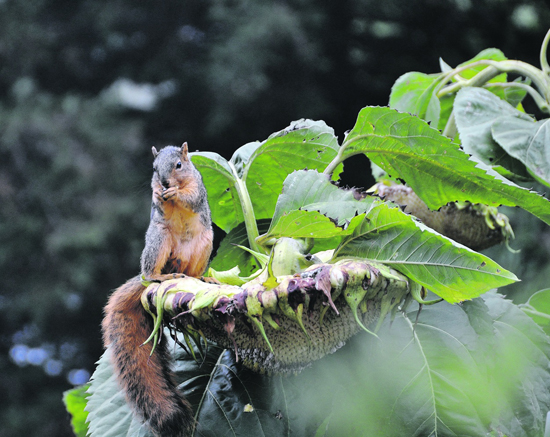 | | Breakfast on the sunflower balcony Photos Andy Scheck
| "As I farm the soil which yields my food, I share creation. Kings can do no more." Chinese proverb
"Dirt - $5.00!" the sign read in a corner shop in New York City. At age 19, this was my first trip to the mega metropolis paved in concrete and blacktop. Hard times had hit our farm in California because of the drought combined with the low prices wineries were paying grape growers. I ran to the nearest pay phone to call home. "Daddy," I shouted in the receiver, "I found the solution to save our ranch. DIRT! Here in New York City, five-pound bags of dirt sell for $5. We have 368 acres of the brown stuff. I think we hit pay dirt!" My daddy chuckled. "There's dirt and then there's soil," he responded.
Potting soil, topsoil, peat, compost, mulch - all are different compositions of soil mixes that can be purchased in garden centers to increase the texture, aeration, and nutrient concentration of your own backyard dirt. The best soil is a loamy soil because it contains a balance of sand, silt, clay, and humus. Without good soil, you'll never have a great garden, no matter where you buy your plants or how much you spend. I like to compare soil to building a house. You can design the most beautiful structure, but if you have not built a strong, solid foundation, the building will not endure. Even with excellent construction, a house still needs regular upkeep including painting, cleaning, re-roofing, gutter cleaning, water-proofing, termite inspections, and more to preserve its integrity. Our precious dirt requires the identical maintenance.
After years of growing, the soil in our once lush gardens is depleted of nutrients. Crop rotating, mulching, composting, amendments, and soil replacement are necessary. Fall is a great time of year to determine what kind of soil you have. Fill a small jar with soil samples and leave it to settle overnight. The next day you will see distinct layers with sand staying on the bottom, silt in the middle, and clay will be on top. Once you see what percentage you have of which type (and in our area, most likely you'll have mostly clay), you'll be able to purchase the correct "dirt" to fix your garden. The optimum is a consistency that when rolled in the palm of your hand will be a bit gritty, smooth, sticky, dry, soft, crumbly, and dark like chocolate cake. As soon as you start increasing the health of your soil, you will start seeing results.
Since I focused on soil amendments and cover crops in my last issue, you may wonder why I am again preaching the benefits of nutrient rich dirt. Many readers contacted me after that article was published to complain about the lack of a bountiful vegetable harvest. The number one question was, "Should I replace my soil?"
One gardener with a bushel of practical knowledge when it comes to maintaining great soil to reap great crops is the publisher of Lamorinda Weekly, Andy Scheck. His tomatoes and zucchinis are so plentiful that he cans 20 pounds in an evening, drinking the sweet juice as he goes. I finally caught up with this busy man between videotaping the politicians, printing the latest newspaper, and, of course, puttering in his garden.
Interview with Andy Scheck
Cynthia: What is your secret to growing a great garden?
Andy: As you know, Cynthia, working the soil is the most important work you can do for your garden. We compost and maintain the compost regularly to "harvest" soil twice a year.
Cynthia: Can you explain how you compost?
Andy: When I came to California from Germany I bought a chipper for composting. Kitchen scraps, weeds, flowers (except for roses because they have thorns), leaves, and grass are composted. I water it occasionally and then let it sit for four or five months. Before I use it, I add chicken manure, Monterey beach sand, and two bags of regular gardening soil. It makes a nice mix. When it looks and feels ready, we "harvest" this new soil and spread it around the yard. I get about 24 cubic feet each time.
Cynthia: Have you always gardened, Andy?
Andy: I did a little gardening when I was living in Germany. When I was 19, I bought a piece of land to later build my house on and my uncle asked if he could use it as a garden meanwhile. He taught me to garden. We grew mainly lettuce, potatoes, and strawberries.
Cynthia: Tomatoes are one of your favorite crops and you grow ample amounts. Lamorinda isn't the best area for tomatoes, how do you do it?
Andy: First of all, as I already stated, I compost and enrich the soil twice a year. I irrigate with drip, which helps to keep down the weeds. For my tomatoes, I keep only one stem, letting the stem grow tall, breaking off any leaves that are close to the ground to keep the plants clean and disease free. If a leaf turns brown, I cut it off. Lots of sunshine and air circulation are key to success. My gopher barrier has also been successful because gophers are smart. It's important that every corner is wired. We harvested over 200 pounds of tomatoes this season and we've been eating them from July through November. There is nothing better than this!
Cynthia: What about your giant sunflowers?
Andy: I can't take credit for the sunflowers. Last year Eric Dausman gave me some plants he had grown from seeds. I planted them and grew gigantic sunflowers. I was lucky to capture a photo of a squirrel dining on the sunflower "balcony."
Cynthia: Any final tips for our readers?
The best part of gardening is being in nature. Everyday we spend at least 20 minutes walking around the garden seeing what's new and changed. We become one with the garden. Gardening is a huge pleasure. We eat berries for breakfast, add cucumbers to our salads, eat tomatoes right off the vine, and experiment cooking zucchini in many different ways. Everything is healthy, and tastes better fresh. And I like being green, knowing we are doing our part to keep pollution at a minimum.
Cynthia: Thanks Andy for all this useful information. All gardeners enjoy sharing their bounty and we benefit from your experiences.
How does your garden grow? Follow Andy's tips and you'll be smiling this time next year.
|
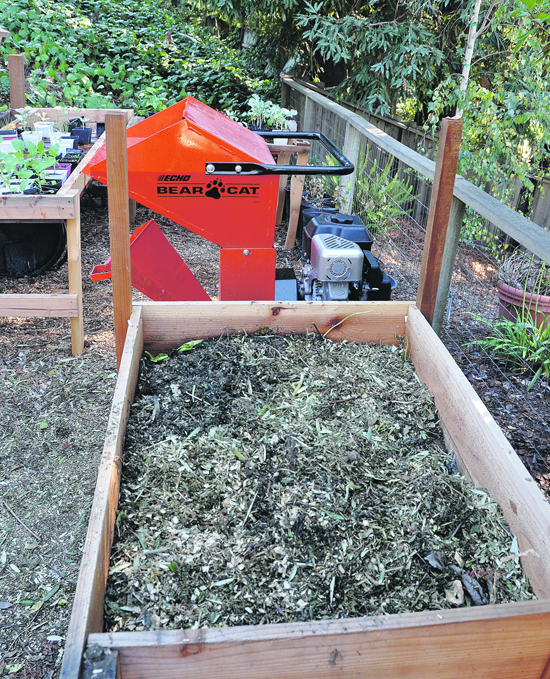 | | Compost bin filled with chipped garden waste
| 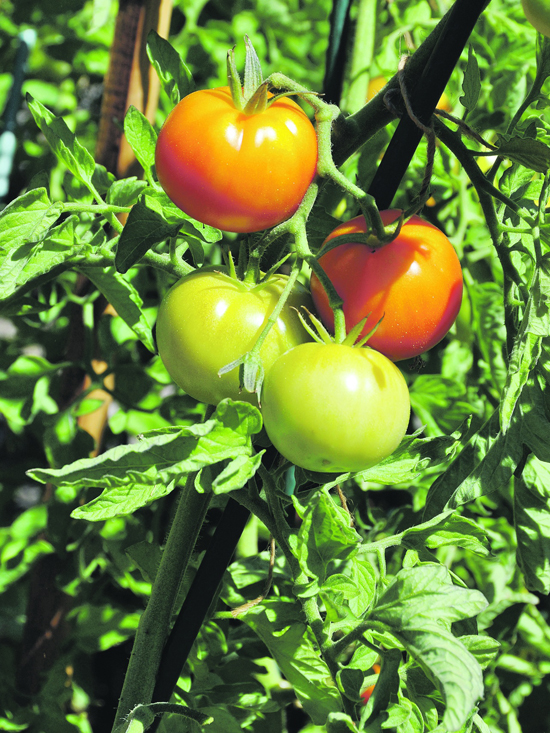 | |
| 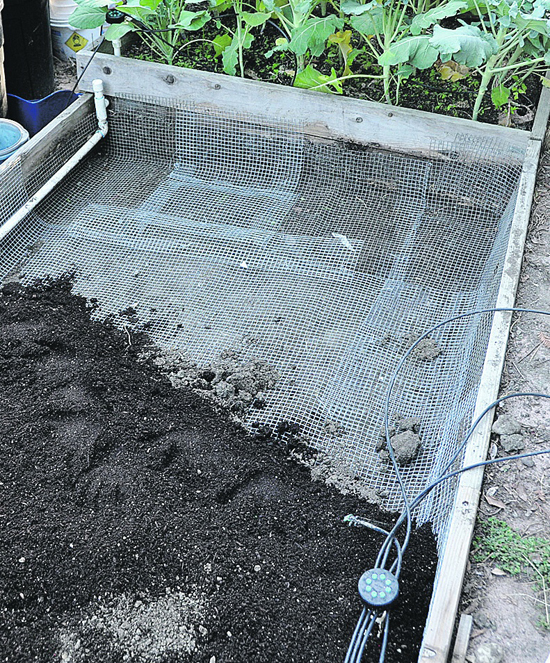 | | Wire cloth helps to keep gophers out
|
| Cynthia Brian's Gardening Guide for November
"...a man can do no better than to eat and drink, and find satisfaction in his work." -Solomon, Ecclesiastes 2:24
When I was writing Chicken Soup for the Gardener's Soul, we received a very sweet story from a nurse working in an eldercare facility. Penned on a napkin, she described their garden project for November - planting bulbs. Each person was given a specific task from digging the hole, taking the bulb out of the bag, putting the bulb in the hole, adding a scoop of bone meal, covering it with soil, and watering it. One gentleman who had difficulty understanding the directions was asked to just watch. At the end of the planting when everyone looked at their work they were confused as to why every bulb sat on top of the dirt when each person had done their job very carefully. They all looked to the man who was told to observe and questioned him. He retorted, "You told me to keep my eye on the bulb and I did just that!" Although the narrative didn't make it to the top 101 stories published, I always chuckle every November when I begin planting my bulbs.
- DIG bulbs now. Bulbs that do well in our area, including tulips, crocus, daffodils, are available in nurseries and garden
centers. Dig the holes a little deeper and stack three bulbs with different blooming times for a longer show of color come
spring. Plant naturalizing Narcissi six inches apart so that roots don't strangle each other or compete for water and
nutrients.
- PLANT azaleas this month. If the weather is dry, make sure to keep the ground moist around the plants. Hanging begonias
add a special splash of fall color to your patio.
- TAG trees that you'll want to cut down or prune heavily this winter. If you will use the wood for fires, make sure to dry it
for at least a full year. Dried firewood produces 7,700 BTU of energy when burned, while green, wet wood
produces 5,000 BTU.
- SCRATCH a limb to find out if a limb or branch is alive or dead. If it's green it's still alive.
- REDUCE the risk of infection from tick bites for you and your pets with Tangelfoot's new product, Tick Twister. This
small device attaches to your keychain or pet's collar for safe and easy removal of ticks.
- FIX vent screens, broken foundation, and roof shakes and remove brush and wood piles from the perimeter of your house
to deter mice and rats from building their winter abode.
- KEEP your heart healthy by including several of these fall harvest power foods in your meal planning: dark leafy greens,
broccoli, pomegranate, and nuts. You'll get antioxidants, fiber, phytonurtirients, plus calcium, magnesium,
and potassium.
- CLEAN UP container plants before bringing them indoors for the winter.
- REPAIR garden tools and equipment before storing.
- WEED your garden once again, then, cover your yard with mulch. If you have a large space, consider contacting a local
tree trimming service to ask for free wood chips. They are great at preventing weeds and making your garden look groomed.
- HARVEST sweet potatoes but don't rush. The longer they are in the ground, the sweeter they become. Wait until the
leaves yellow and frost is near. Didn't plant any last year? Put them on your "must plant" for next season's healthy treats.
- SPICE up the Thanksgiving table by juicing your apples and adding seltzer water, nutmeg, and cinnamon for a
tasty refresher.
- PICK your pumpkins and fairytale gourds for a November porch party.
- EXPLORE, experiment, and experience with the fall foliage in our luscious surroundings. Bring a bit of fall indoors.
- SALUTE the wild turkeys trotting through our neighborhoods. They have no clue what's cooking on November 22!
- THANKS to everyone for reading Digging Deep. Wishing you a Thanksgiving filled with the love of family, friends,
and frivolity. Eat, drink, and be grateful for your work, play, and soil.
Happy Gardening to You!
(c)2012 Cynthia Brian
The Goddess Gardener
Cynthia@GoddessGardener.com
www.GoddessGardener.com
925-377-7827
I am available as a speaker, designer, and consultant.
|
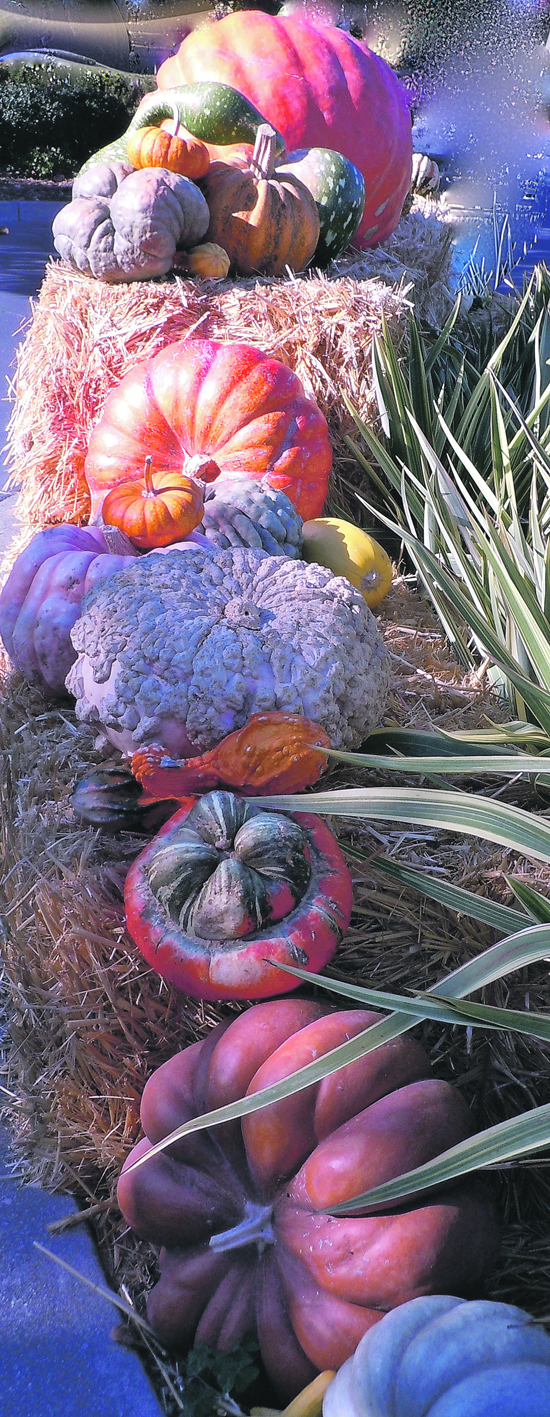 | |
| | | | | Advertisement | | |
| | | print story
Before you print this article, please remember that it will remain in our archive for you to visit anytime.
download pdf
(use the pdf document for best printing results!) | | | Comments | | |
| | | | | | | | | | | | | | | | |






